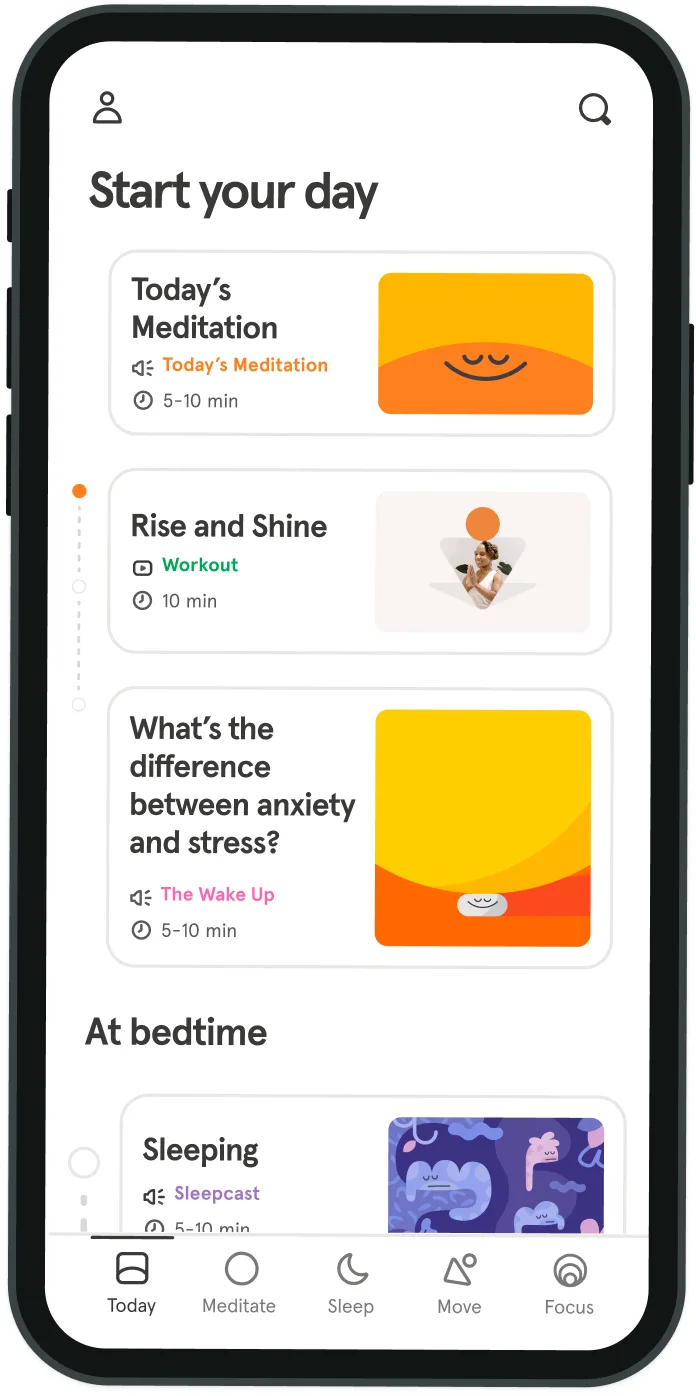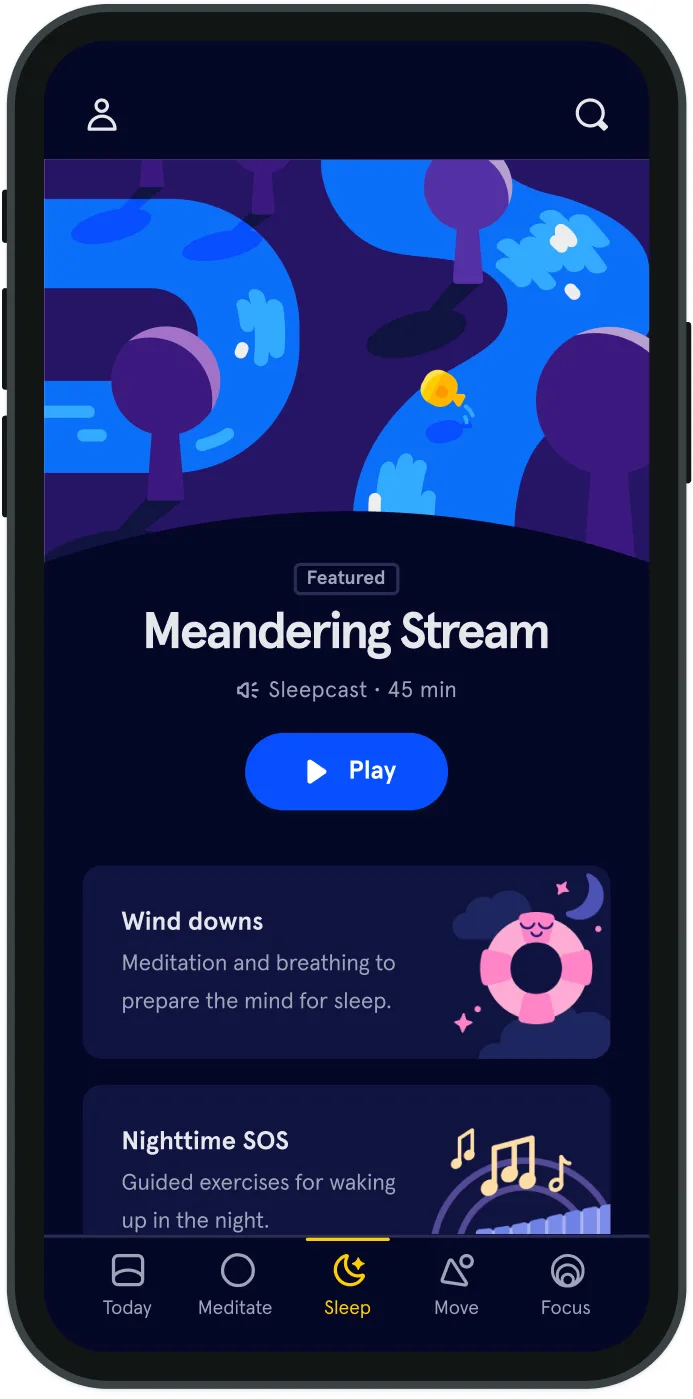How to find better work-life balance
In a time when work emails are often read on personal phones and more offices are set up at home, it’s clear that personal and professional lives are becoming increasingly intertwined. In striving to strike a sustainable work-life balance, we’re often told to draw a hard line between these 2 worlds. But is this still possible? Or is it time to try a different approach?
Evaluating our work and home balance tends to become a priority for many of us once we notice an underlying feeling of dissatisfaction or imbalance in our daily lives. Perhaps it feels like the candle is burning at both ends or that it's a struggle to be present or to give ourselves fully to anyone or anything. Maybe quality personal time is suffering, becoming shadowed by extended deadlines or stressful thoughts about work.
Should we find ourselves here (or even if we haven’t reached this point quite yet), reassessing how we show up in both our personal and professional lives can ultimately lead to a more mindful and balanced state.

How can we achieve a healthy work-life balance?
Key takeaways:
- There's a difference between workaholism vs work-home balance
- Mindfulness can shift the way you view work-life balance
- Practical tips can also help improve work-life balance when working from home
What happens when home life and work life are imbalanced
When most of us look at the energy we give to our work versus our personal lives, the scales often tip towards work. While it’s common to end up in this scenario, placing too much emphasis on our jobs or careers may result in burnout— a sense of feeling exhausted, emotionally drained, unproductive, and unmotivated. In 2021, this is something more than half of America’s workforce struggles with.
If work-home balance feels off-kilter because of an internal compulsion to work beyond what’s expected, this might indicate workaholism, a behavior that can have implications on all facets of life.
In addition to being more susceptible to burnout, workaholics may also deal with physiological issues caused by the heightened stress experienced on a regular basis. Researchers have even found that this behavior often results in more work-family conflict and poor functioning outside of work compared to people who don't identify as workaholics.
As we craft the road map to a healthy work-life balance, it may feel like the best first step is to reduce the number of hours spent at work each week. While this may certainly help, it’s not always an option. Instead, we might consider how weaving mindfulness into our day may help both worlds feel more rewarding.
Using mindfulness to create a better work-life-balance
Most solutions for creating an ideal work-life balance tend to center around scheduling, like allowing 8 hours a day for work and taking regular 10-minute breaks. Establishing boundaries like this may help if they’re available, but, as our way of working evolves, it’s not always possible to draw this definitive line in the sand.
Instead, what if we reframed the ideal work-life balance to be less about the number of hours split between personal and professional duties and more about how fulfilled we feel at the end of each day?
Getting to this place may be easier by adopting a meditation practice. Learning to sit with the mind can nurture not only heightened awareness but increased clarity, allowing us to zoom out and notice when we’re working beyond what’s expected of us.
In time, meditation affords us a clearer perspective on life, allowing us to better see healthy and unhealthy patterns or boundaries.
Another benefit is that, by better understanding how the mind works, we can learn to be less reactive and handle stressful situations better. Rather than frantically trudging through busy days at work, we can realize when it’s time to pause and reprioritize. In short, awareness can be the key to working smarter, not harder.
Guided meditation can also teach us how to be more present and fully engage with each person or task in front of you. On a tactical level, this can cause an uptick in productivity, meaning we may be able to get our work done at a faster rate, allowing for more personal time.
How to establish work-life balance when working from home
Whether we’ve been working out of our home for years or we’re one of the millions who was thrust into remote work due to the COVID-19 pandemic, we’ve likely come to find that conducting business in the same space we use to unwind can come with a unique set of challenges.
To mindfully manage our work-from-home work-life balance, we might consider using these 3 tactical strategies in addition to a daily mindfulness practice:
-
Establish a morning routine. Ever feel tempted to roll out of bed and jump straight into your first morning meeting? Consider learning how to become a better morning person by creating a mindful morning routine. This means we get to start the day with dedicated time designed just for us. As an added bonus, this AM ritual may even help us to feel more relaxed, inspired, and productive as we move into the workday afterward.
-
Create a designated workspace. Having an entirely separate home office isn’t possible for everyone, but mindfully creating a workspace that exhibits some sense of separation between where we relax and where we work can help us achieve a greater sense of overall balance. Designating a corner of a room or tabletop in a common room might work for some, while others might configure a setup that can be put away at the end of each day. The act of setting up and taking down your workspace each day can signal to the brain when work is about to begin or end — an important boundary.
-
Take yourself through a fake commute. Like assembling and breaking down a home office, a daily commute can help the brain transition between home and work roles. If a traditional commute is no longer a part of our workdays, we can create a similar effect by scheduling an activity that takes us outside of the home, like a neighborhood walk, bike ride, or something as quick and simple as stepping outside for a 10-minute guided meditation.
As different as all of our work situations may be, striving to feel content as we move between our personal and professional time is something we all have in common. If it's been a struggle to craft a balance that feels sustainable and fulfilling, using mindful intention and awareness throughout the day may be the key to finally unlocking a way of life that, up until now, has felt out of reach.
Try a free meditation to help with work-life balance


Be kind to your mind
- Access the full library of 500+ meditations on everything from stress, to resilience, to compassion
- Put your mind to bed with sleep sounds, music, and wind-down exercises
- Make mindfulness a part of your daily routine with tension-releasing workouts, relaxing yoga, Focus music playlists, and more

Stay in the loop
Be the first to get updates on our latest content, special offers, and new features.
By signing up, you’re agreeing to receive marketing emails from Headspace. You can unsubscribe at any time. For more details, check out our Privacy Policy.
- © 2025 Headspace Inc.
- Terms & conditions
- Privacy policy
- Consumer Health Data
- Your privacy choices
- CA Privacy Notice

